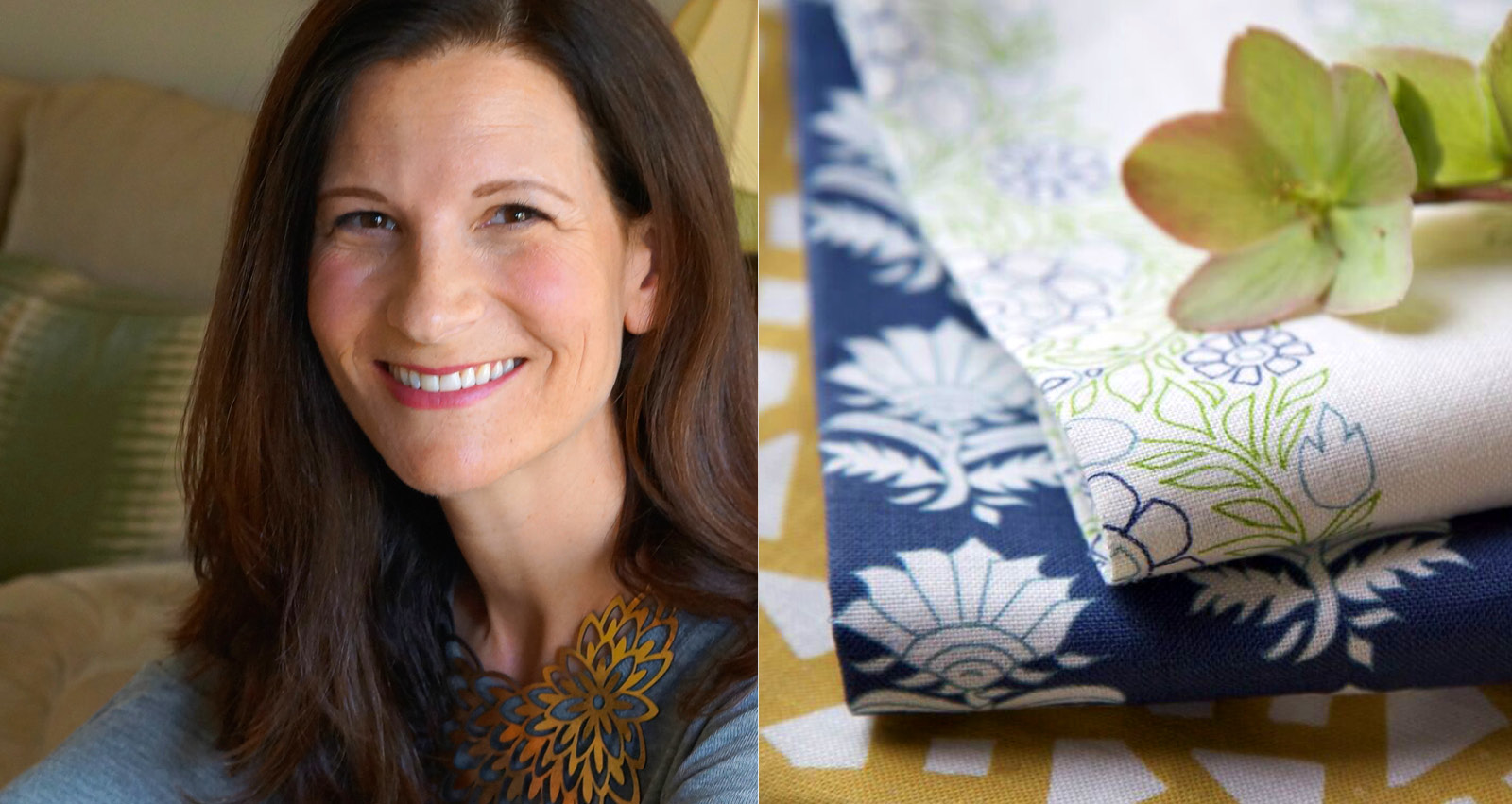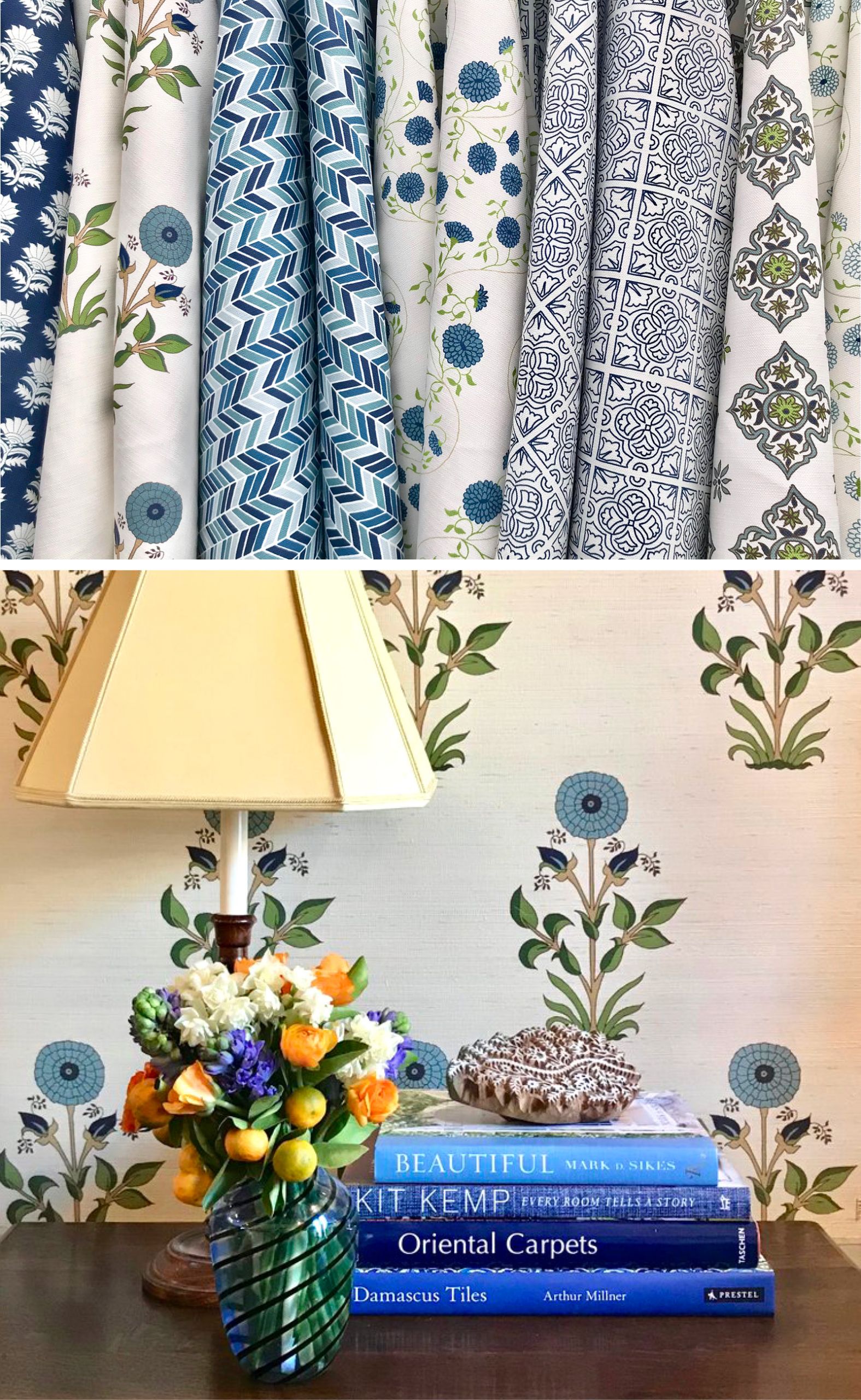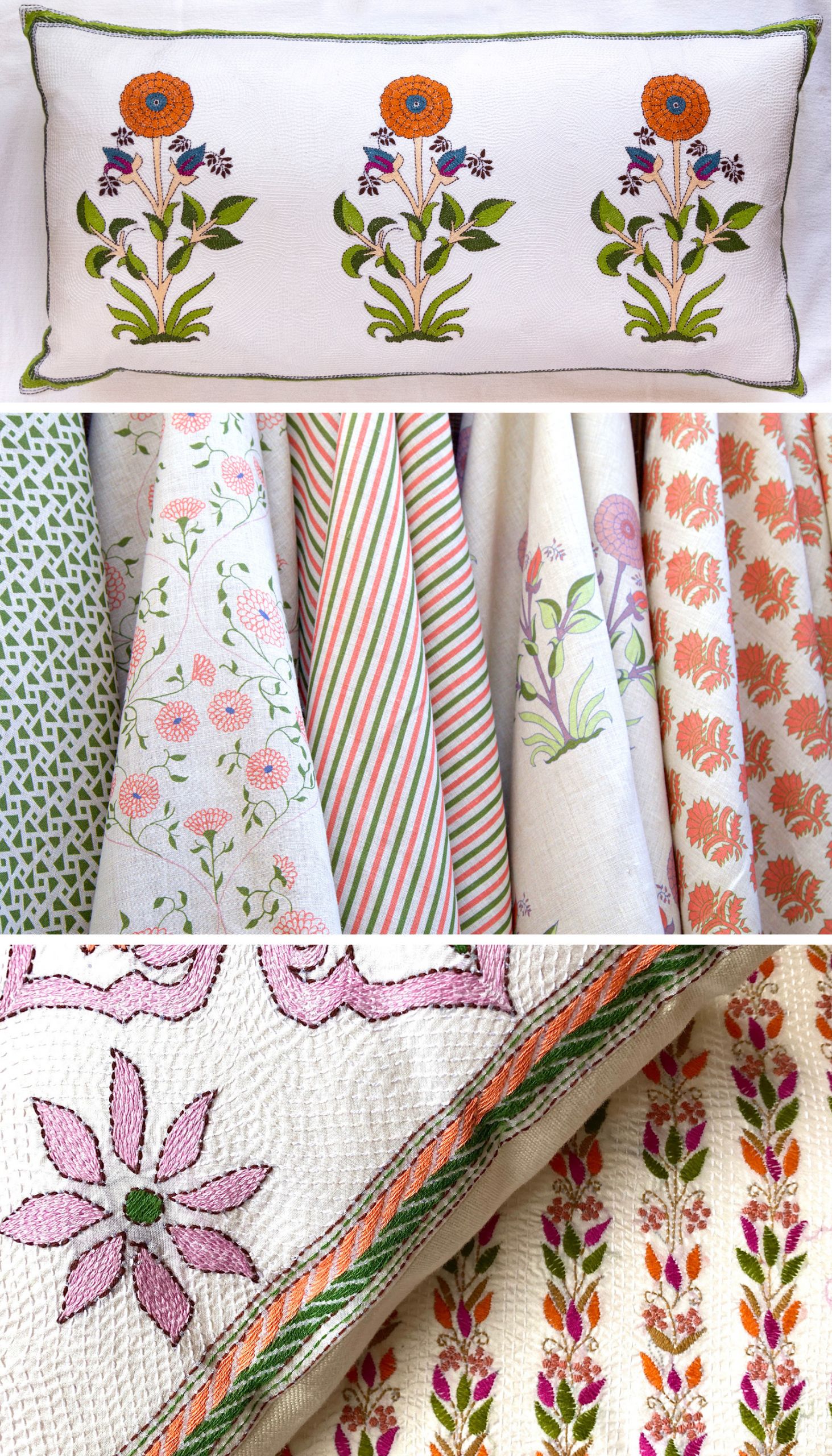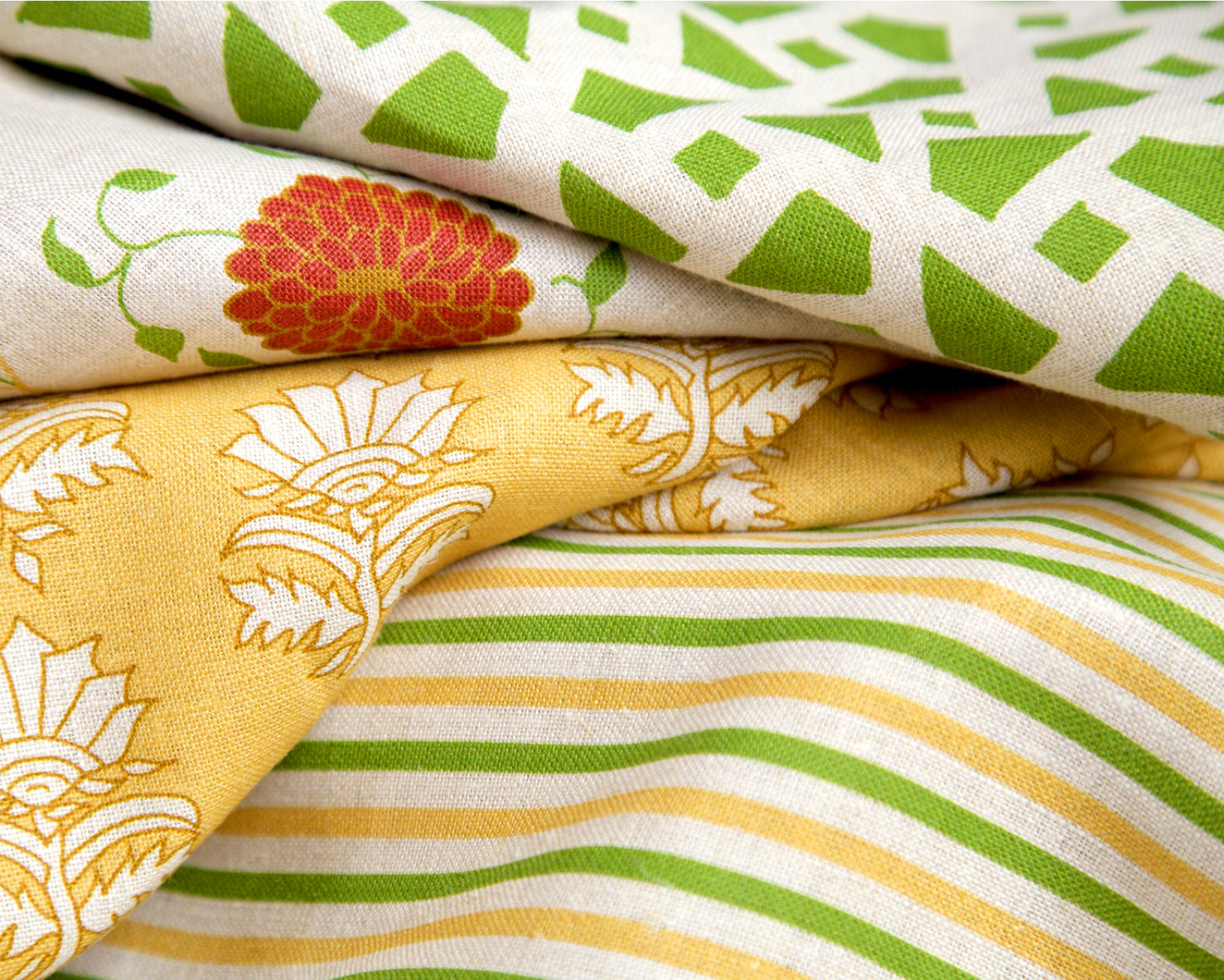
Our world of design feels like it keeps getting smaller. It is so gratifying and fun to reconnect with friends I grew up with who are now also working in the interiors industry.
Even more surprising was running into a sorority sister in Los Angeles. At a design event I attended several years ago, Alex Conroy launched her fabric line at Harbinger, one of my go-to showrooms. Her design style is crisp and colorful and filled with pattern, geometry, and flowers. I quickly came to adore her look.
Based in San Francisco now, she spent years in New York’s luxury lifestyle world. It’s apropos that her design talent and artful love for all things beautiful manifested from the early drawings of Wonder Woman that decorated her family’s refrigerator. As the mom of twin boys, she is a wonder woman. I’m thrilled to introduce you to my friend Alex.

Beautiful lighting rivals sculpture as artwork. Carpets age into visual perfection. Furniture slithers into shapes that are both sexy and spellbinding. With so many parts that contribute to beautiful interiors, why do we fall in love with fabrics first?
We are tactile creatures, and we like to touch things. Being able to feel something in your hands is a satisfying experience. Texture matters as much as the look of a textile. Think about it. If textiles are your “food,” there is an endless supply of beauty out there because the textile itself is in its purest form. You know when you choose a light fixture that it is meant to light. You know when you select cabinet hardware that it is intended to ease the movement of opening drawers and doors. But when you look at a piece of fabric, you’re not quite sure what it’s going to be. It demands imagination.
Creativity is as much an inherent part of the human DNA as eye color. Why do we yearn to exercise our creative muscles?
We’ve always had some desire to create or see something special. Pinterest and Instagram have pushed that desire to a higher priority. People like the idea of living with beauty and living their lives beautifully. Creativity allows us to craft and form, and that gives us control in our lives. Looking at beautiful things is one way to nourish us. But creativity feeds everyone differently—sometimes in the form of art, sometimes in the form of music, sometimes in the form of books—anything that moves us and makes us feel connected.

Speaking of DNA, creativity seems to pulse throughout every member of your family.
My parents were collectors and were always interested in exposing my sister and me to art and museums. I spent many hours at galleries waiting for them to finish doing whatever they were doing—talking to artists, meeting ceramicists whose medium they held a special fondness for. My mother was a cartoonist and worked for Hanna-Barbera as a line artist. Needless to say, my sister and I drew all the time. I took art classes in the summer and on weekends. As I expanded my knowledge of art history, I loved creating for myself, too.
Let’s start from the beginning, actually from the time you left home. Tell us the journey that led you to a textile collection.
In my 20s, I moved to New York and held a series of jobs in marketing in the luxury arena. I worked at Tiffany. I worked at Conde Nast and Hearst in promotions. When my husband and I married, we moved to San Francisco, where we’ve raised our identical twin boys, now 17. I wanted to be home with my kids, but that didn’t mean my desire to create disappeared.
Event planning was a part of my position at Vogue, and so I applied that skill to event planning on the West Coast. Next came a florist business that I started when the boys went to preschool. It was the perfect industry for me at the time because of the schedule. I would hit the flower market when it opened at 4 in the morning, and I could finish my arrangements for the day before the kids woke up. I learned so much about design during that time. It’s about color, texture, pattern, movement. What was true of floral arrangements is true in textiles. The same principles apply.
Some physical challenges pulled me out of the game for a bit, and when I got better, I didn’t want to waste time. I made a quick decision to take my doodles and turn them into something. Why wait when you have a passion? And thus, my textile collection launched in 2017.

We’ve heard the story before. She works in the corporate world. She wants a career change. She paints/writes/crafts, some form of artful creativity. How do you merge those worlds?
On a regular basis, I find myself giving thanks to my previous jobs. In those structured “business world” environments, I learned planning, organization, deadlines, the importance of responsiveness, and attention to detail. These skills are important to operating a business, small or large—just as important as the creative juice itself.

Tell me how travel has shaped you.
I feel fortunate that I was able to travel during a time that, when you traveled to different places, it felt different. The cultural touchpoints were a wonderful contrast from destination to destination. Now everything is so globally connected. It can be difficult to tell where people are from because we are inspired by the same fashion designers no matter where you are in the world.
When I did most of my traveling, I was able to see the world and its vibrant diversity. Within the realm of design, architecture has always spoken to me, so I was able to find continual inspiration as I visited different countries. Travel allows us the opportunity to shake off routines and open our eyes. Travel within your own domain is equally important. Especially if you can train yourself to view everywhere you go as if you were a tourist in another country. As a parent, I try to point out beauty in the simple parts of life: a sunset, a flower, anything. Everything. I believe finding beauty in the simple things is the best way to develop an eye.
I’ll ask the question that every designer, every creator answers over and over. What inspires your textiles?
It’s a fairly consistent inspiration that I’ve brought from my travels. I’m the person who is always taking a picture of the floor, the ceiling, the grapes, the wrought iron, all of it. Large marigold, thistle, Jaipur, and lotus…all Indian-inspired patterns. I’ve taken India’s traditional block-print patterns and tightened them into something that’s a little crisp, a little preppy, and feels true to me. I’ve made the motif my own. “Roman Stripes” is the result of a marble mosaic that I spotted on a wall in Rome. I added to it and turned it into a stripe. Likewise, “Irish Tile” is a continuous overall pattern that I rethought after seeing a tile in a Dublin cathedral. I made the pattern current by only using the form’s outlines and eliminating the color.
Plenty of giant fabric houses offer something for everyone. What is different about a small-batch maker?
It allows a very specific point of view without a broad view that is all things to all people. It allows you to discover your own vision and carry it through. I know and am fine with the fact that I won’t appeal to everyone.
I print digitally, a way of producing that specifically makes your order FOR YOU. Because the fabrics and wallpaper are made to order, it becomes a much more personal experience. I can also be rather nimble with digital printing and encourage collaborations with designers to choose custom coloring. It’s a great process.

